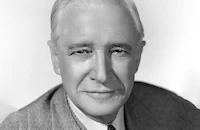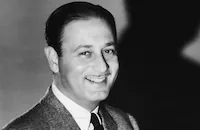Sequoia

Brief Synopsis
Cast & Crew
Chester M. Franklin
Jean Parker
Russell Hardie
Samuel S. Hinds
Paul Hurst
Ben Hall
Film Details
Technical Specs

Synopsis
Toni Martin and her father Matthew live in the High Sierras with their cook Sang Soo and his infant son Feng. One day, while hiking through the wilderness, Toni discovers a young unprotected puma cub, whose mother has been caught in a man-made trap, being pursued by a wolf, and decides to help bring it to safety. Later, Toni adopts a young fawn that is being chased by a pack of dogs belonging to the nefarious Bergman, a local rancher and hunting party leader, and the dogs chase Toni and her newfound friends until ranger Bob Alden saves them. Grateful for his help, Toni invites Bob to meet her father, a struggling writer, and the three discuss the predatory practices of animals, debating Toni and Matthew's hypothesis that two animals such as a baby puma and a fawn, instinctive enemies, can be raised to live in harmony. Bob disagrees with the Martins and mentions that though it is his job to capture pumas for the state, which pays him twenty dollars a piece for their hides, he is willing to overlook this case while Toni and her father conduct an experiment to test their hypothesis. Matthew finds a subject for a new book in Toni's experiment, but Bob is certain that the two animals will eventually revert to type and disappoint them. Toni names the puma Gato and the fawn Malibu and watches them grow up as friends.
One day, when Gato is blamed for raiding Bergman's nearby chicken coop, Bob is forced to insist that Toni set her animals free. Reluctantly, Toni turns Gato and Malibu loose to brave forest fires, storms and other natural hardships on their own. A few years later, Toni and her father, whose book has been a great success, are visited by Gato and Malibu, who lead Toni to a giant animal trap built by Bergman and his men. Malibu gets caught in the trap, but with the help of Toni and Gato, he is freed. One afternoon, while tending to the young Feng Soo, Toni leaves the child tethered to Malibu's son while she takes a swim, and just as a rattlesnake threatens to attack the unafraid boy, Malibu happens upon the scene and quickly stomps the snake to death. When Bergman and his men attempt to rustle a number of deer out from the National Park to be used as kill for a hunting party, Malibu saves them by showing them how to jump over the corral fence. Bergman goes after Malibu, but when Gato comes to the deer's aid, Bergman wrestles with the puma until he forces Gato over the edge of a cliff. Gato lands safely, but Malibu charges Bergman and bucks him over the precipice to his death. A romance between Toni and Bob flourishes, and Bob, convinced of the success of Toni's experiment, presents her with a gift that is sure to please her: a notice proclaiming the extension of the government game refuge boundary lines, which will secure the protection of Gato, Malibu and other animals from hunters.

Cast

Jean Parker
Russell Hardie

Samuel S. Hinds
Paul Hurst
Ben Hall
Willie Fung
Harry Lowe Jr.

Edward Brophy
Crew
Frank R. Adams
Sam Armstrong
Ethel Borden
John W. Considine Jr.
Ann Cunningham
Clyde De Vinna
Leon Gordon
Charles Hochberg
Chester A. Lyons
Douglas Shearer
Leonard Smith
Herbert Stothart
C. Gardner Sullivan
Carey Wilson

Film Details
Technical Specs

Quotes
Trivia
Notes
Contemporary sources indicate that this film was shot on location at Heather Lake in Sequoia National Park in California. According to Hollywood Reporter pre-release news items, location shooting began in May 1933, but was halted when the original fawn being filmed grew up too soon. Prior to the resumption of production in mid-July 1934, shooting on the film was held up two more times: Once when the starring deer shed the velvet from its antelers, and again when the deer shed its antelers entirely. When filming resumed for the fourth time, director Chester M. Franklin was set to handle the animal sequences for five weeks, while Edwin Marin directed the dialogue sequences. At the time of the fourth production start, M-G-M acknowledged that the film, originally budgeted at $250,000, would end up costing $400,000. Another Hollywood Reporter pre-release news item noted that production was held up for nearly one month due to inclement weather. Because it was not known whether necessary scenes with the deer were obtained, M-G-M asked Ann Cunningham and Sam Armstrong to rewrite a portion of the script to match with the location shots already made. February 1934 Hollywood Reporter production charts list Nick Grindé along with Chester Franklin as the directors of the film, and Clyde De Vinna along with Chester Lyons as the photographers. An 8 June Hollywood Reporter news item noted that William K. Howard, who was either directing Sequoia at the time or was set to direct, was swithched to The Old Maid. Although Hollywood Reporter production charts list Olin Howland and David Landau in the cast, their appearance in the released film has not been confirmed. A later Hollywood Reporter production chart listed only Leon Smith as the film's photographer, and named Franklin and Marin as the directors. Studio press material notes that all the necessary equipment, as well as hundreds of pounds of food to use as animal bait, was carried on the backs of mules and horses to a ten acre nature compound that was built to contain the local wildlife for filming purposes. The location was at an elevation of eleven thousand feet in the High Sierras. According to contemporary Hollywood Reporter news items, soon after this film was completed, Paramount considered filming a sequel, to be called Wild Glory, but cancelled their plans because the studio already had two animal pictures underway. Hollywood Reporter contemporary news items also note that the animal stars of this film, Malibu and Gato, made personal appearances at the Boston first run showing and at other first run showings around the country.














